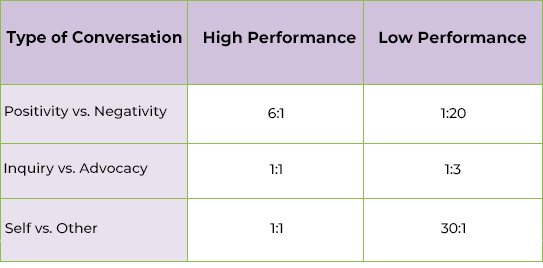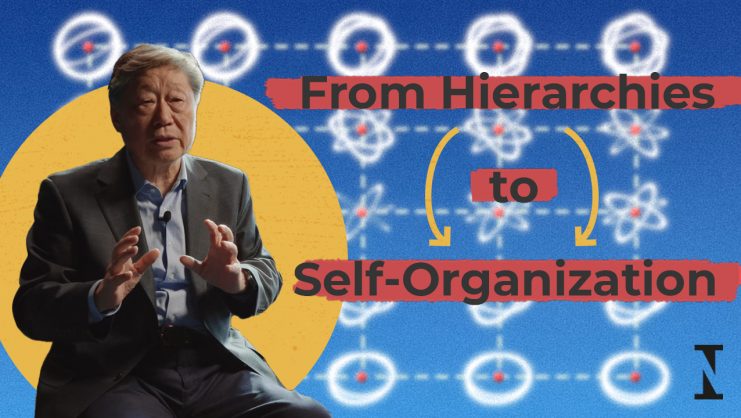How can I keep my team motivated in the face of uncertainty? How can I inspire individuals to be proactive and take action? How can I encourage innovation? These are just some of the questions I hear from my clients these days. Leading people has always been a challenge – and these days particularly so, thanks to the pandemic and the increased stress it has caused for organizations and the people inside them.
Thus, in addition to the traditional business activities, leaders must now manage the emotions of their teams. To do this, leaders must also manage their own emotions more mindfully and learn to focus on and prioritize their own self-care.
Yet, the end of the quarter is always looming, the bottom line ever-present. So how can leaders keep this in mind, sustain motivation and productivity among workers while conveying a sense of calmness? Advances in neuroscience and the science of positive psychology provide insight here.
Barbara Fredrickson, a professor of Psychology and Director of the Positive Emotions and Psychophysiology Laboratory at the University of North Carolina at Chapel Hill, has been investigating the effect of positive emotions for more than thirty years. Her research shows that people with a positive attitude overcome difficulties more quickly and are more resilient. Based on her research, she developed the broaden-and-build theory, which uses positive emotions to solve developmental and growth challenges instead of solving survival issues.
A positive mindset is the breeding ground for creativity, expansive and visionary thinking, empathy, cooperation, and connection. Moreover, broadening one’s mindset makes people better equipped to overcome adversity. Her findings shed light on how people with a positive mindset become stronger and develop exponentially in overcoming obstacles. In the world of business, Frederickson’s research shows that high-performing teams use at least a 3:1 ratio of positive messages as opposed to negative ones.
Marcial Losada and Emily Heaphy, who studied the impact of team conversations, calculate that the ratio of positive versus negative interactions in high-performing teams is 6:1. Their research clearly demonstrates the impact of the type of conversations on team performance, and therefore on results:
The first question leaders should ask themselves is: what type of conversations do we have amongst the team? in the hallways? via email and web chats? with superiors and with colleagues? Are these productive conversations or do they stir up emotions that are unproductive, even toxic and destructive?
Resonant leaders attract while dissonant leaders repel. Richard Boyatzis, a professor at Case Western University, has studied the relationship between inspirational leadership and its impact on relationships from a neuroscience perspective. In their book, Primal Leadership: Unleashing the Power of Emotional Intelligence, Boyatzis, Daniel Goleman, and Annie McKee coined the term “resonant leader” to describe a figure who is “attuned to people’s feelings” and “moves them in a positive emotional direction.”
Thanks to advances in magnetic resonance research on the movement of brain neurons, studies have shown that resonant leaders connect and activate one part of the brain, while dissonant leaders, who send out negative emotions, activate another part of the brain. This is produced by the effect of mirror neurons which, as their name indicates, reproduce the reflection of what they perceive. This brain-to-brain transmission takes place primarily below consciousness.
Resonant leaders turn on brain circuitry that makes people become receptive to new ideas and enables them to observe and analyze business and social environments. However, a different circuit is triggered in dissonant leaders. The socializing brain circuit is disabled and the areas of the brain that focus on problem-solving and efficient job performance are activated. When the task-execution circuit is turned on, the circuit that activates receptiveness to new ideas and environmental observation is turned off.
Therefore, when leaders help people around them to feel positive, these people are receptive to building relationships; they can think creatively and they are open to different ideas, thus ratifying Frederickson’s broaden-and-build theory. Dissonant leaders, however, have the opposite effect – by focusing primarily on weaknesses and problems, these leaders make others feel threatened and activate their brain’s survival mode, which literally encourages them to flee.
What can leaders do to ensure teams are motivated and with a positive attitude?
- Use consistently positive language. Construct sentences around what you want to achieve and avoid what you don’t want. For example, instead of saying “we cannot afford the number of incidents to increase,” say “let’s do everything we can to increase service quality and decrease the number of incidents.”
- Look on the bright side. Try starting meetings with an appreciative warmer by asking, “What is the best thing that has happened to you this week? What has been the best business or customer service interaction?” These simple questions tap into positive emotions and activate the brain’s circuitry of expansion, building, and connection.
- Ask generative questions that focus on making the best of the situation, and even improving it. For example, when is your customer most satisfied? How can everyone contribute to the success of this project? If you were starting the project from scratch, how would you go about it? What is important to you in this particular project?
- Nurture the positive energy. It is important to surround yourself with people with whom you can have productive conversations and a mutual investment in each other’s goals. In addition, building a network of positive relationships – and this requires an investment of time and focus – create a support system for when we are discouraged or confused.
- Take responsibility for your self-care. Looking after one’s mental, physical, emotional, and spiritual health is a priority for everyone and particularly so for leaders because they have many others who depend on them. It is important to find the time to recharge, relax, and open up space for reflective thinking. This can be done through regular exercise, healthy eating, mindfulness practice, and spending time with family and friends.
MADAVI, where I work as an appreciative facilitator, recently conducted a project with the Spanish supermarket chain, Eroski, in which we focus on helping managers and employees discover what they do best in terms of customer service and find ways to improve upon it even more. Just nine months after the initiative got off the ground, Eroski customer satisfaction rose from 68% to 87%.
It’s not magic, it’s science. By cherishing and nurturing the emotions and connections between the people of an organization, leaders can create positive results that make an impact on individuals and on business.
© IE Insights.












